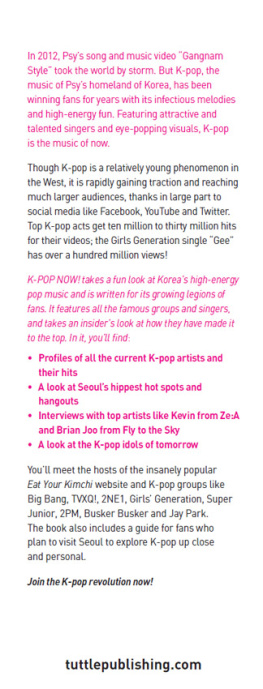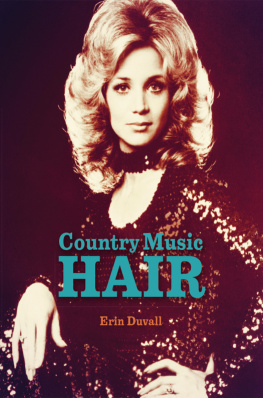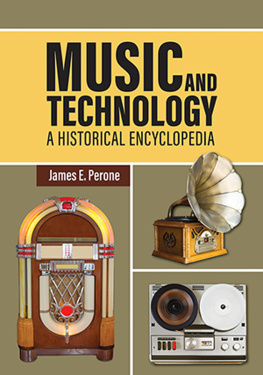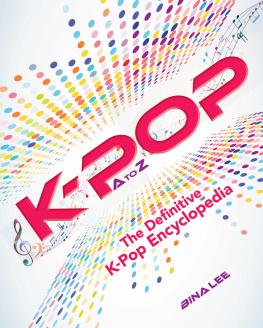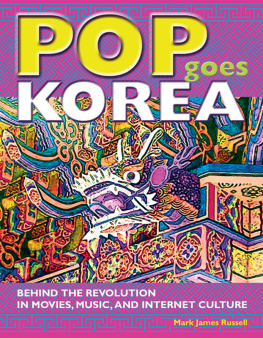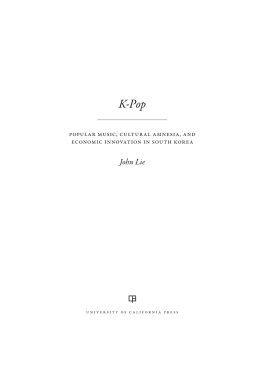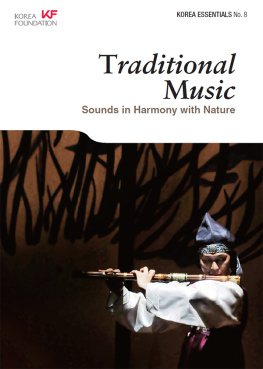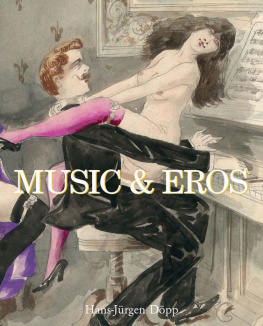Acknowledgements
A huge thanks to all the music companies and their international PR teams who participated in this book: SM Entertainment, JYP Entertainment, YG Entertainment, TS Entertainment, Star Empire Entertainment, Starship, Pledis, Loen, Cube Entertainment, Jungle Entertainment, Sidus HQ, FNC, CJ E&M, Nega Networks and Big Hit.
I am also incredibly grateful to everyone who was willing to be interviewed for this book, in particular Brian Joo, Kevin Kim and Simon and Martina Stawski.
Thanks to Robert Koehler for his excellent photos of Seoul, as well as all the other individuals and companies who supplied photos for the book.
And thanks to all of you who bought this book. K-pop producers in Korea may be big companies with a lot of marketing power, but the success of K-pop around the world has very much been a grassroots sensation, powered by people like you who found out about it online or by word of mouth. Its pretty awesome to be a part of your network.

The sun rising over Seoul as the nations capital wakes up in the morning.

You cant really understand K-pop without knowing something about the land that gave rise to it. Its no surprise that modern Korea is as flashy and exciting as the music it has created. Just as K-pop continually changes and moves forward, in Korea change is the only constant, especially in Seoul.
There was a time not long ago when Seoul was overwhelmingly drab, full of boring concrete and ugly buildings. Not anymore. Todays Seoul looks to dazzle with amazing shops, the coolest styles, and more and more incredible modern architecture. Walking around the fancy shops by Dosan Park or the winding streets of Hongdae, you quickly understand how the dazzling world of K-pop was born here.
Seoul is the biggest city in Korea, home to ten million people, with another ten million living in the suburbs and surrounding cities. Its huge. And although Seoul is more than 600 years old, most of the city is actually quite new. After the Korean War (19503) pretty much leveled everything, there were barely one million people living there. But as Korea recovered from the war, the country rebuilt, and Seoul in particular rebuilt like crazy, re-fashioning itself again and again.
Today, Korea and its capital Seoul are barely recognizable compared to what they were a generation ago. If you want to know what K-pop is really about, you have to understand where it came from. You need to walk the meandering alleys of Samcheongdong, close to the ancient Gyeongbokgung Palace in the heart of the city. You need to see the brightly lit bridges that cross the Han River.
Today, there are four main neighborhoods if you want to know the cool Seoul: Hongdae, Samcheong, Gangnam and Apgujeong. A city the size of Seoul is, of course, full of interesting and amazing areas but these are key.
HongdaeHongdae being short for Hongik University in Koreanis the main artsy area in Seoul, home to the most popular nightlife area for university students, young artists and indie music. Its also the headquarters of YG Entertainment, one of the big three music labels, which owns big hip-hop clubs like NB as well as restaurants and other buildings right in the heart of the neighborhood.

Gangnam Intersection is the heart of Seouls richest business district, the part of town made famous in Psys Gangnam Style.
Located in western Seoul, in an area rich with top universities, this part of town has long been a bit different. Back when most of Seoul shut down at midnight, Hongdae clubs kept the music going all night long. Artists flocked here for weirdness and cheap rent (although its not cheap anymore). The first techno clubs sprang up here, and today there are dozens of live music clubs and hundreds of bars and other cool hangouts. A weekend flea market in the park at the heart of Hongdae brought in young people selling cute handmade wares of all sorts, further shaping the character.

Gwanghwamun is the front gate to Seouls most famous palace, Gyeongbokgung, first built in 1395.
It is also home to the Coffee Prince caf where the famous TV drama of the same name was shot. There are several theaters in the neighborhood, including the strange curvy building that houses a special theater just for Nanta, a leading Korean performance group (Nanta has four specialized theaters around Seoul). The famous punk brand Bratson also calls Hongdae home, although its main store is across town in the Hannam-dong neighborhood. Bratson is a major staple of YG Entertainments stars, so if you want to buy some of the wild things G-Dragon or Sandara wear in their videos, this is the place to check. There are also several huge new high-rise apartments that many K-pop stars call home, although dont expect to walk in and say Hi. Security is tight. Besides, they are probably all out working hard somewhere.
Another great part of Seoul, located north of the Han River just to the east of the old Gyeongbokgung Palace, is a winding, old-style area in the center of town called Samcheong-dong. When the Korean capital moved to Seoul 600 years ago, this was one of the first neighborhoods to grow up around the old palace. Over the past decade, more and more interesting shops and restaurants have moved into Samcheong-dong, making this old community one of the hippest in Seoul and a common locale for many a TV drama. Samcheongdong, along with the nearby Anguk-dong and Insa-dong areas, is home to many little art galleries and artsy shops, as well as funky tea houses, restaurants, Buddhist temples and a lively street culture. Samcheong-dong is also an area rich in traditional Korean houses, or hanok , many of them converted into art galleries and other cafs. And if thats not enough, it is also the neighborhood where Lee Young-ae, one of Koreas top actresses, has opened a small boutique, Lya Nature, to sell organic and chemical-free childrens clothes and other items.

Geunjeongjeon was the throne room for the Korean kings long ago.

The peaceful coffee shops of Samcheong-dong have some of the prettiest views of old Korean hanok homes.

SM Entertainments headquarters in Cheongdam-dong is getting a giant facelift.
South of the mighty Han River is where Seoul gets much more posh. Thanks to Psy, everyone now has heard of Gangnam. Gangnam may just literally mean south of the river, but for Koreans it conjures up all sorts of ideas of modern living and luxury. A brief scene from The Bourne Legacy was even filmed on a back street here. But the area around Gangnam subway station is much more businesslike these days. It is the home of Samsungs massive headquarters and is a major hub for financial and tech companies.

